
Jewellery Gallery

Jewellery Gallery
The sheer quantity, and in some cases quality, of historical jewellery items that have been found in the village can be a bit daunting so here are samples from a wide range of dates with descriptions kept to a minimum.
Remember these were found over a 50 year period after many hundreds of hours of field walking. There are no easy finds in the area. No hoards have ever been found in Martham.


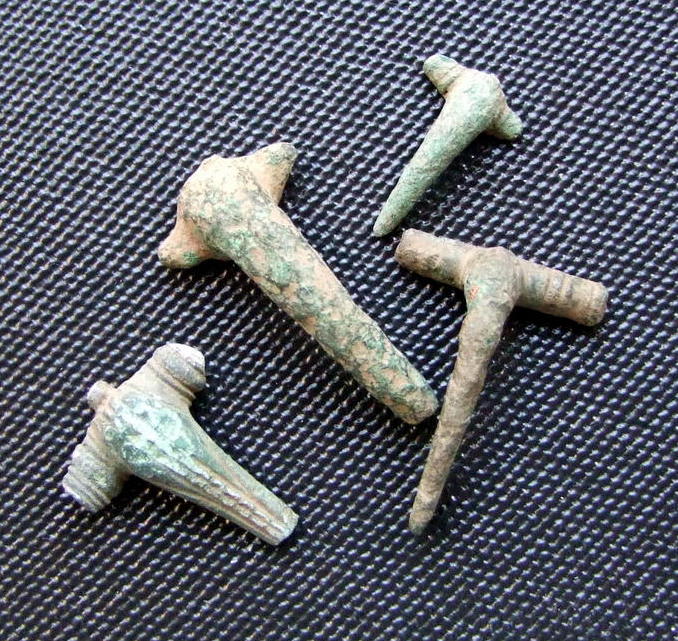
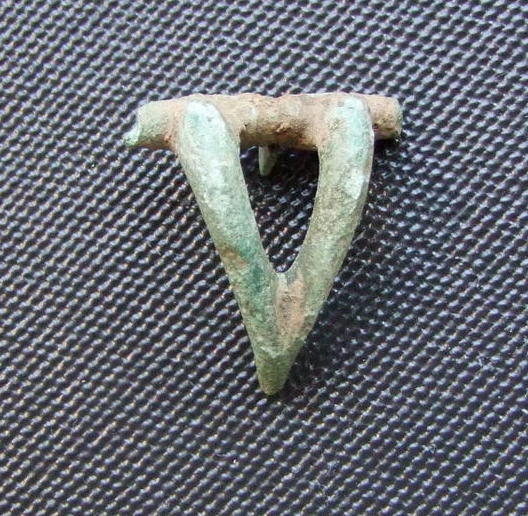


1 – Above. A selection of Roman fibula brooches all found in Martham. Originally designed for fastening garments, they would have had an iron pin on the back much like modern brooches. Contributor A.
2 – Roman double dolphin brooch, 2nd century. Contributor A.
3 – Two views of an incomplete cast copper alloy Roman Aucissa brooch from Gaul. Late 1st century. Contributor GG.
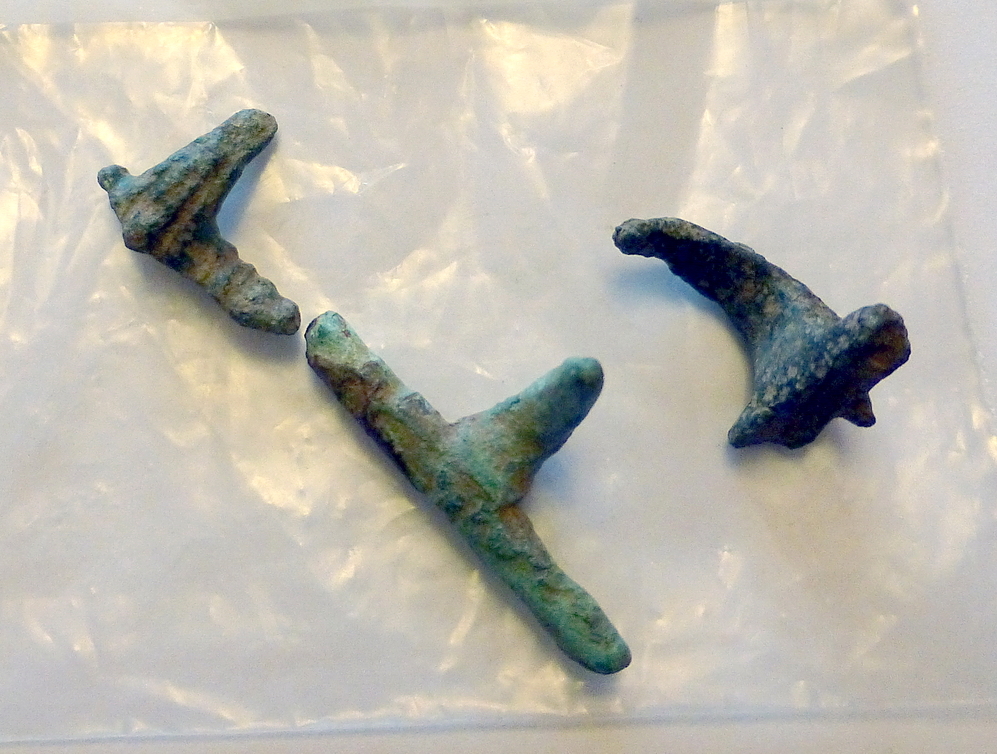




This type of Roman brooch derives from Colchester. It is made of copper alloy and features a T-shaped design. It probably dates to the first century.
Found in February 2024. The finder wishes to remain anonymous.





The three brooches below are significant to Martham as they confirm its strong Saxon origins.


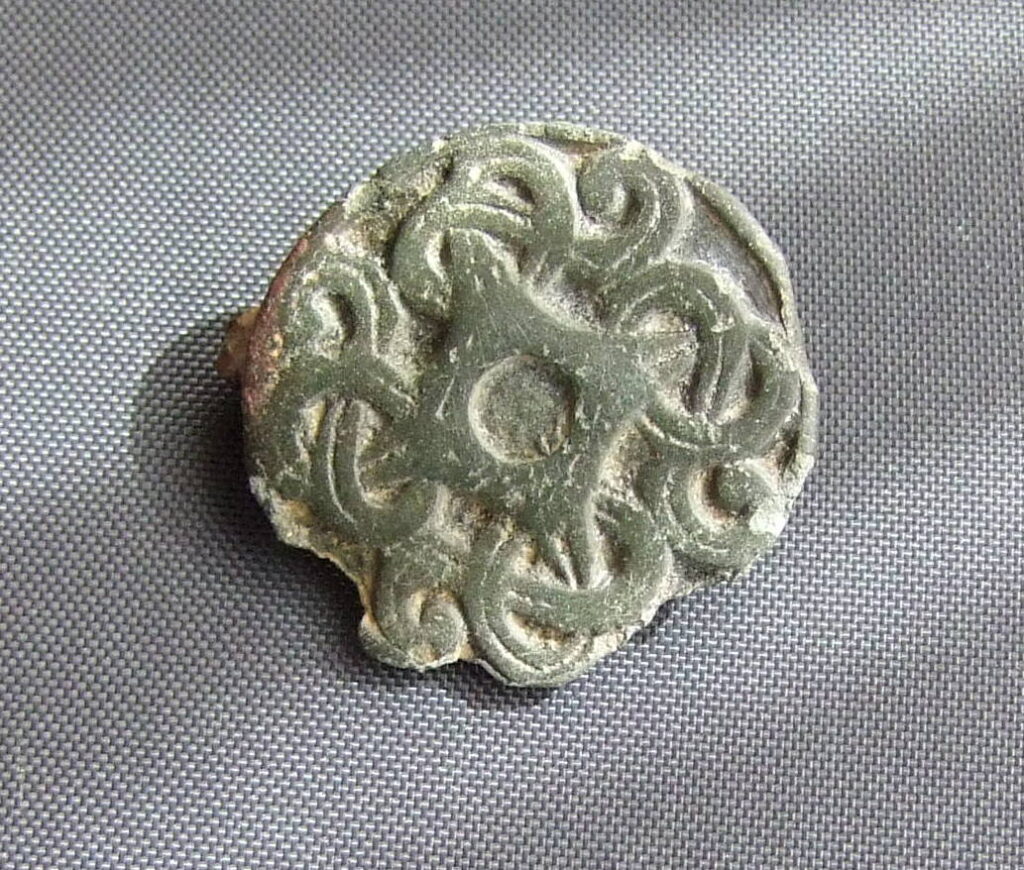

1 above – This late Saxon disc brooch has Viking design influences and shows a backwards looking horse/beast within a border of 28 pellets. The beast has a forked, upturned tail, open jaws and a spiky mane. There is a ring-and-dot-eye plus single ring-and-dots on its breast and haunches. The beast has four legs, with three toes on each. On the reverse are the remains of a pin lug positioned directly behind the beast’s head. It is 27mm in diameter and probably dates to the early 10th century. The contributor is anonymous.
2 above – Saxon brooch with eight glass mounts (5 missing) and a border of pellets.
3 above – Again, supporting Martham’s Saxon heritage we have this late Saxon disc brooch dating to the 10th century. It has a damaged outside edge but remains a lovely example of a deeply cast Borre style decoration comprising a concaved-sided figure with each of the four corners extended to form interlaced, double contoured knots. There is a circular sunken field in the centre. It is 30mm in diameter and the design has Viking influences. The drawing of both sides and edge provides more detail and has kindly been provided by Norwich Museum Service.
The contributor of all three wishes to reman anonymous.


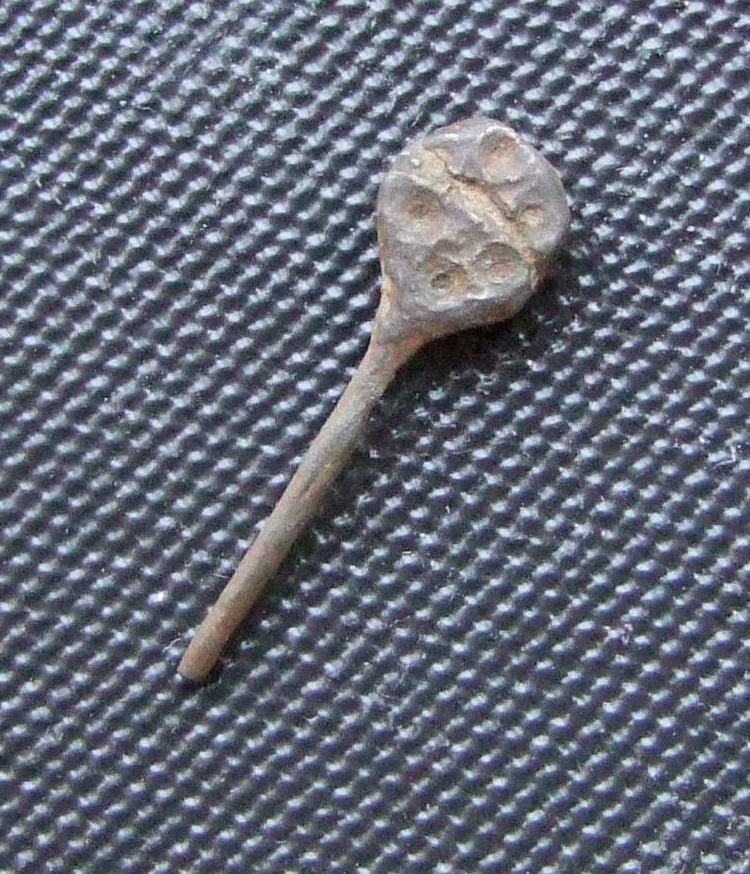
Contributor A.





All three contributed by PD
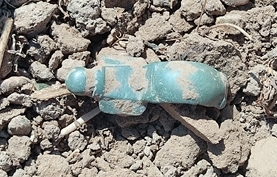
Saxon Cruciform brooch in Martham during the summer of 2022.
Contributor A

Confirming the origins of Martham, this c600AD Saxon small long brooch was found in November 2023.
The finder wishes to remain anonymous.

Saxon brooch with a wolf/serpent facing its tail.
Found summer 2022.
The finder wishes to remain anonymous.


Above is a Saxon violin shaped buckle pin with an example drawing for clearer illustration.
Contributor A.





All contributed by Jean.


